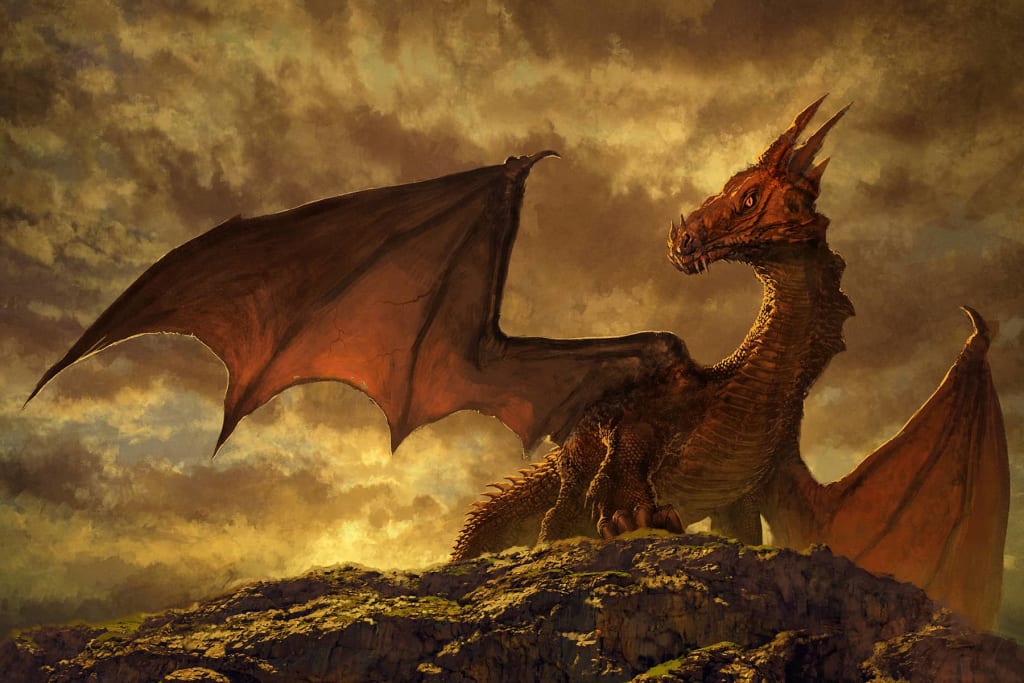Content warning
This story may contain sensitive material or discuss topics that some readers may find distressing. Reader discretion is advised. The views and opinions expressed in this story are those of the author and do not necessarily reflect the official policy or position of Vocal.
Dragon Legends and Folklore
Explore various dragon myths, legends, and folklore from different cultures around the world

Dragons: Legends of the Skies Unveiled
Once upon a time, in a world where dragons roamed the skies and legends intertwined with reality, there existed a tapestry of dragon myths and folklore that spanned across different cultures. These magnificent creatures captivated the imagination of people, inspiring both awe and fear. Let us embark on a journey through time and space, exploring the rich tapestry of dragon legends from around the world.
Our first stop takes us to ancient China, where the dragon was revered as a symbol of power and prosperity. The Chinese dragon, known as "Long," was described as a creature with a sinuous body covered in colorful scales. These dragons possessed extraordinary abilities, such as the ability to control the weather and bring rain to nourish the land. They were believed to be the guardians of the heavens, and emperors were often associated with these majestic beings, signifying their divine right to rule.
Moving across the globe to Europe, we encounter a different depiction of dragons. In European folklore, dragons were often portrayed as fearsome and fire-breathing creatures, associated with chaos and destruction. Knights embarked on daring quests to rescue princesses from the clutches of these malevolent beasts. Dragons were believed to hoard treasures, and their lairs were filled with untold wealth. These stories reflected the struggle between good and evil, with dragons representing the embodiment of darkness that needed to be vanquished.
In Norse mythology, dragons took on a more enigmatic and awe-inspiring form. Jormungandr, also known as the Midgard Serpent, was a colossal sea serpent encircling the Earth, grasping its own tail. The sight of this serpent was believed to induce great fear and wonder, for it symbolized the cyclical nature of life, death, and rebirth. Jormungandr was destined to fight against Thor during Ragnarok, the cataclysmic battle that marked the end of the world.
Venturing to the mystical lands of Middle Eastern folklore, we encounter the legends of the Djinn. These supernatural beings, often associated with fire, shape-shifting, and immense power, were sometimes depicted as dragon-like creatures. They possessed wisdom beyond human understanding and could grant wishes to those who summoned them. However, crossing paths with a Djinn was a risky endeavor, as their immense power could be both a blessing and a curse.
Crossing the vast expanse of the Pacific Ocean, we arrive in the land of the Māori people of New Zealand. Here, dragons were known as "taniwha," guardian spirits that inhabited lakes, rivers, and coastal areas. The taniwha could take the form of serpents or dragons, and they played a significant role in protecting their respective territories. They were believed to have the ability to shape-shift into human form and guide or warn the Māori people about potential dangers or provide them with spiritual guidance.
As we delve deeper into the annals of dragon folklore, we find common threads that bind these mythical creatures together. Dragons, irrespective of their regional variations, were often associated with immense power, wisdom, and the capacity to transcend the boundaries of the natural world. They represented the primal forces of nature and the mysteries that lie beyond human understanding.
While their appearances, powers, and roles differed across cultures, dragons were invariably regarded as potent symbols that sparked the human imagination. They represented the duality of creation and destruction, the dichotomy between chaos and order, and the eternal struggle between good and evil.
Today, the legends and folklore of dragons continue to captivate our collective consciousness. They fuel our creativity, appearing in literature, art, and popular culture. Dragons soar across the pages of epic fantasy novels, grace the silver screen in breathtaking CGI spectacles, and adorn the walls of ancient temples and modern-day museums.
In the end, whether dragons were merely figments of our imagination or remnants of ancient encounters with undiscovered creatures, their legacy persists. The mystery of dragons lingers, weaving itself into the very fabric of our shared human mythology. As we gaze at the skies above, perhaps we catch a fleeting glimpse of a dragon's silhouette, a reminder of the enduring power of legends that transcend time and culture.





Comments
There are no comments for this story
Be the first to respond and start the conversation.